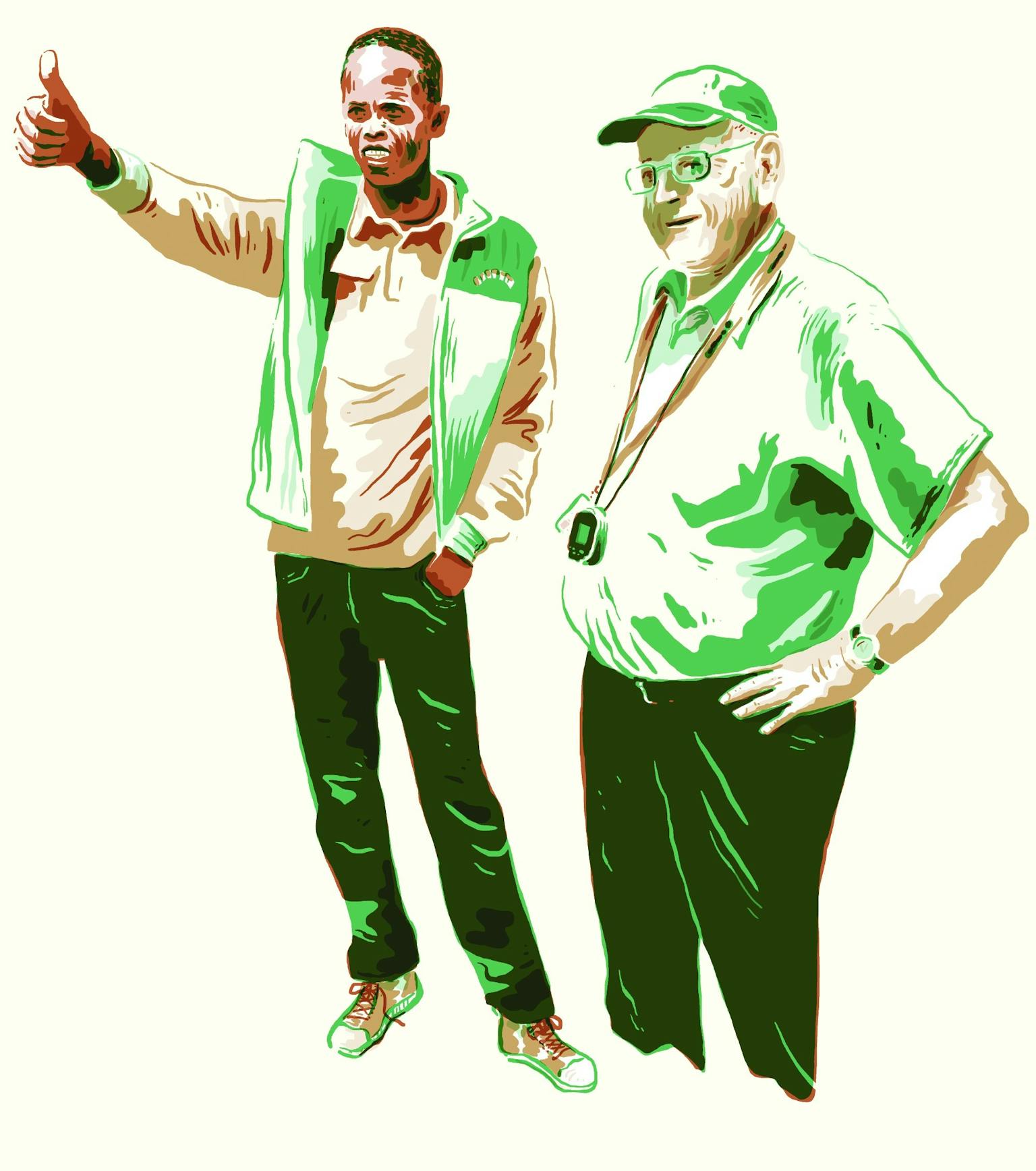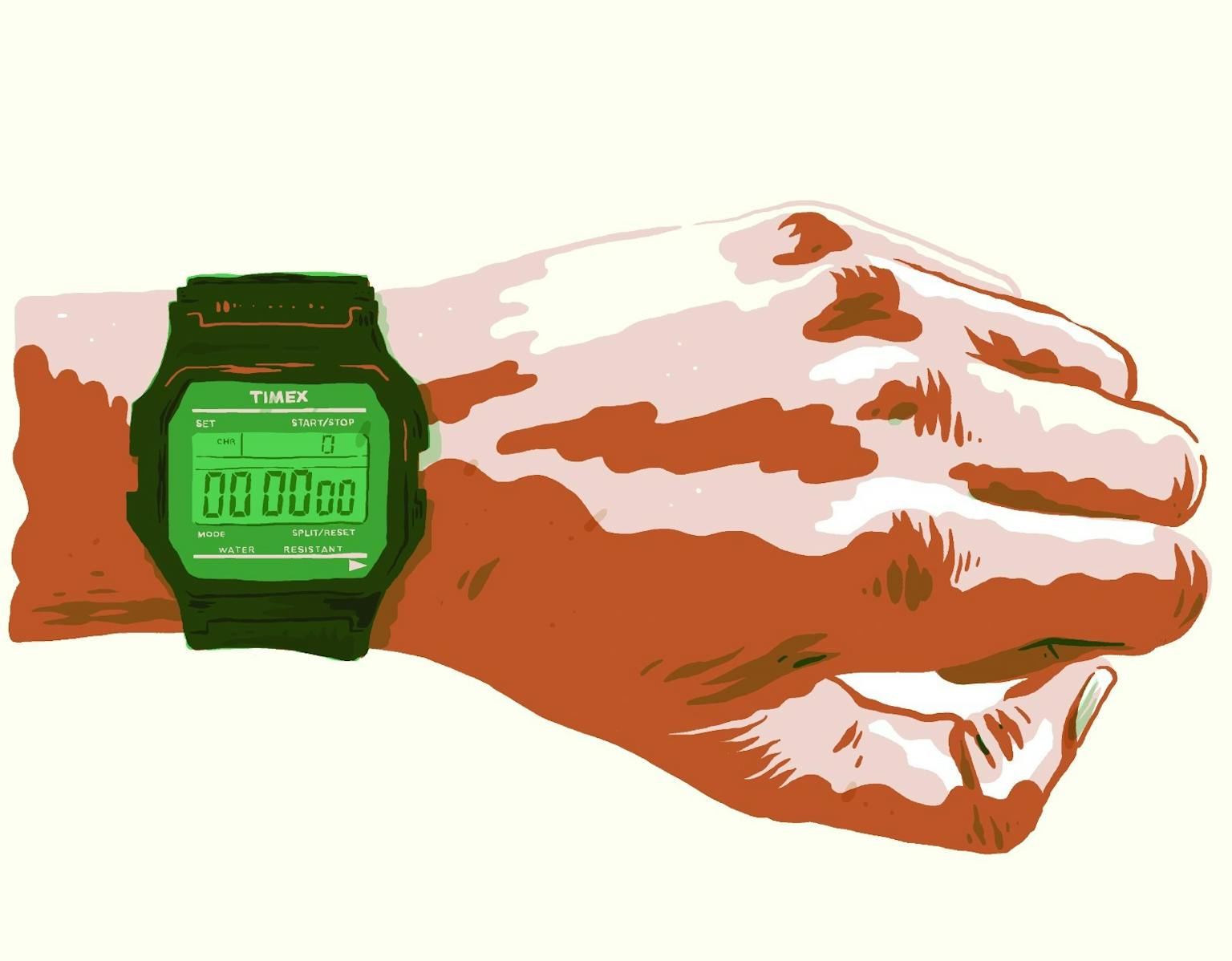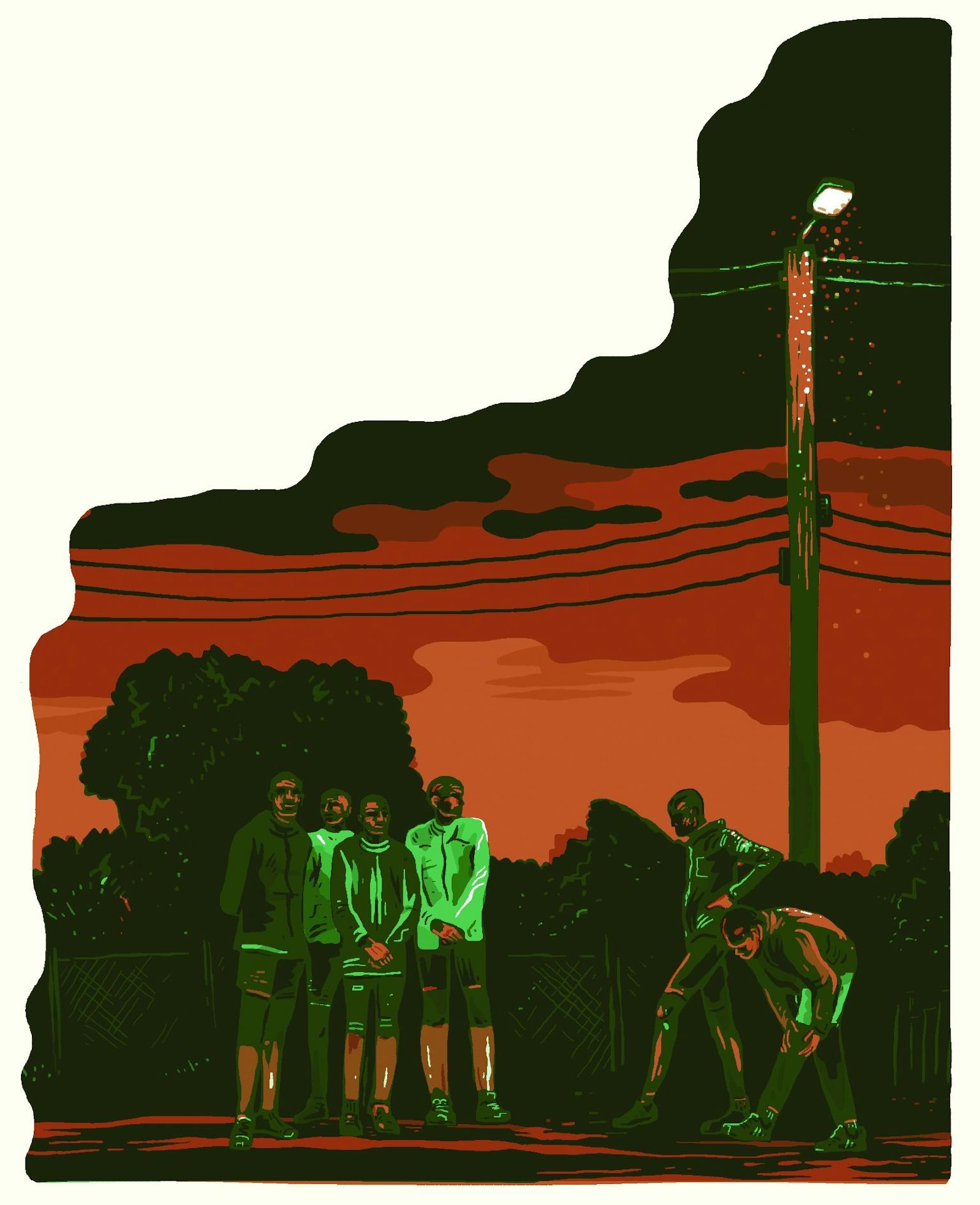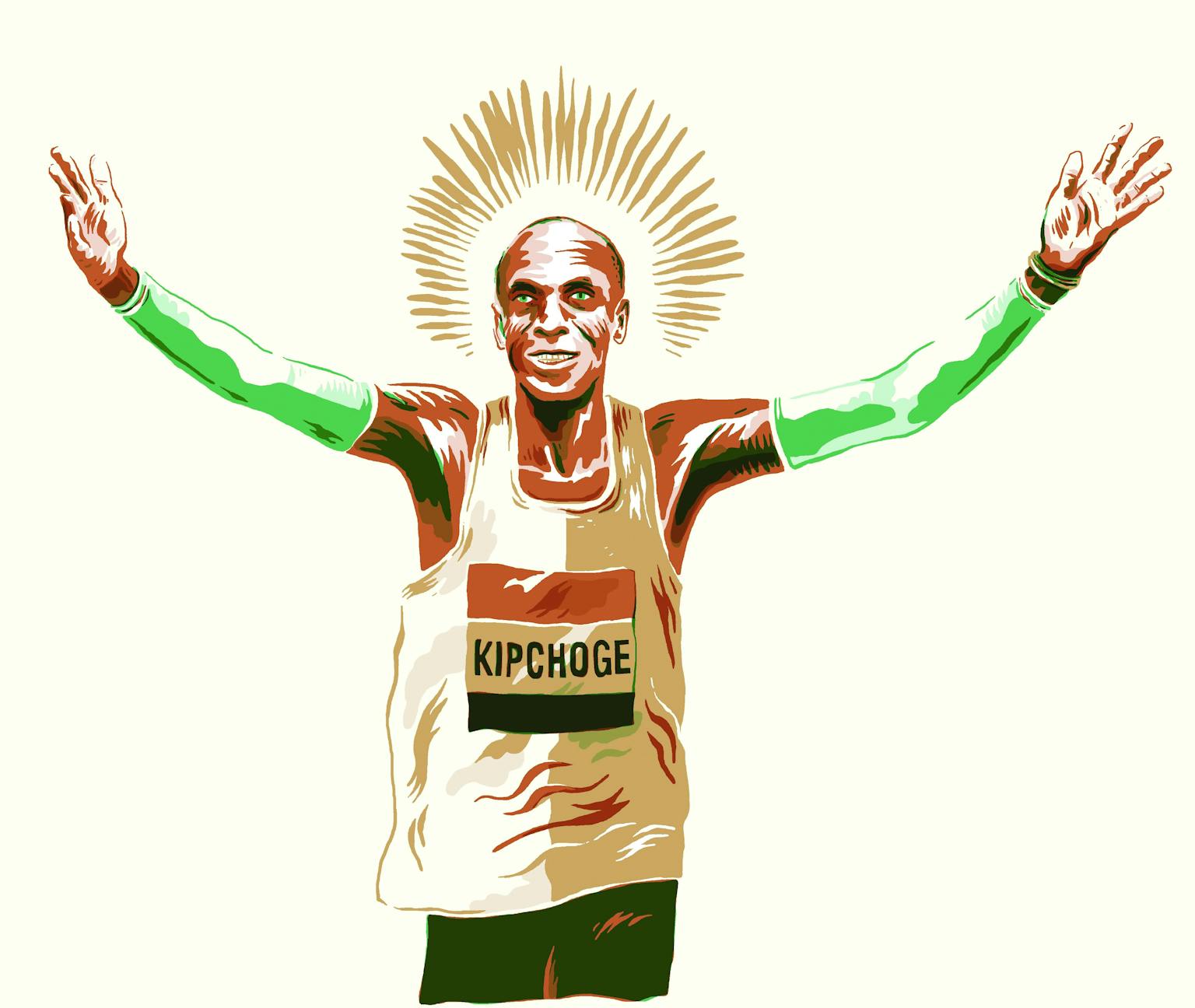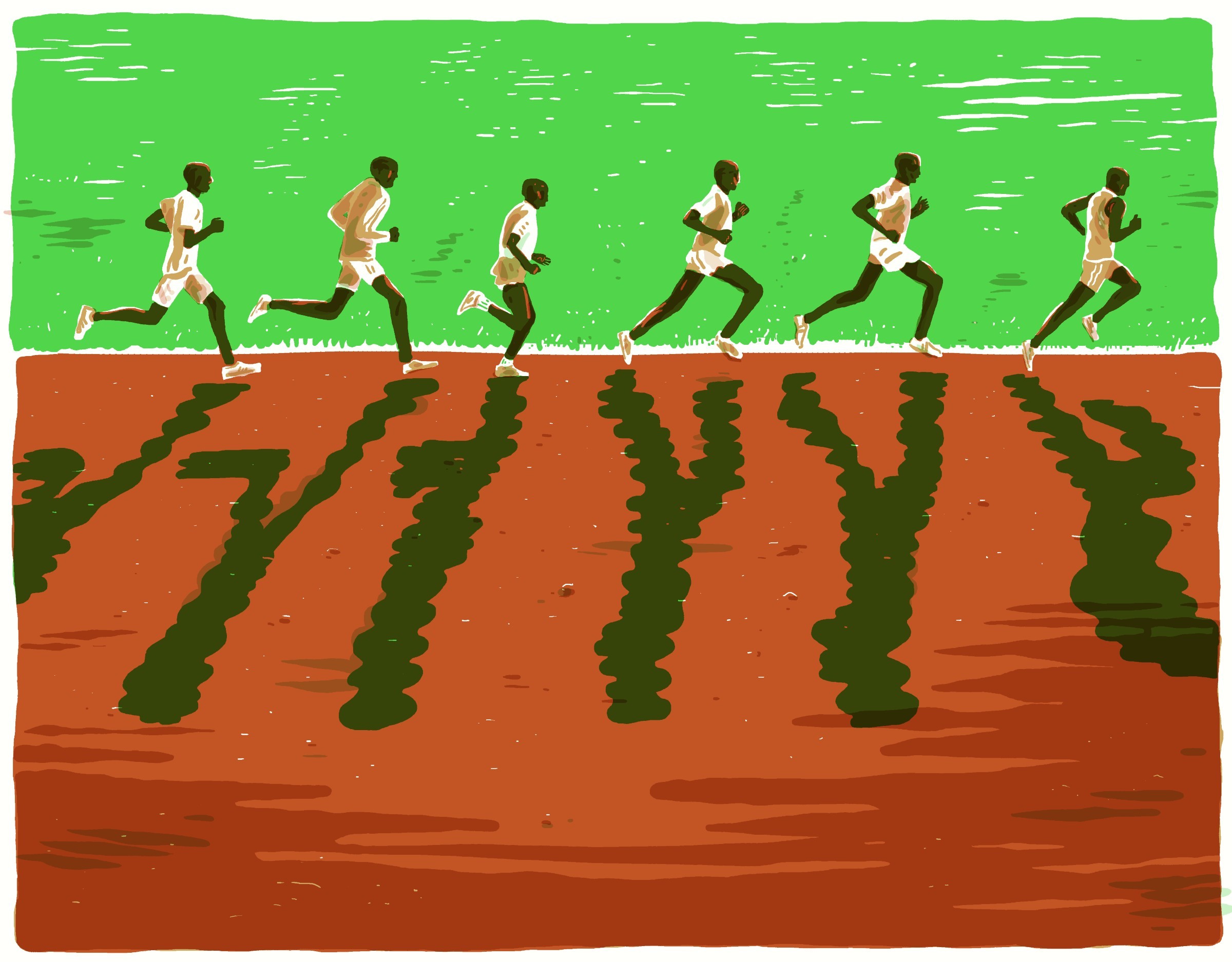

KENYAN LESSONS
Words by Adharanand Finn
Illustrations by Jindřich Janíček
East Africa hasn’t come to dominate global distance running by chance - science is putting theory to the culture that has created that success. What can you learn from the Kenyans? Author Adharanand Finn found out the hard way, on the dirt roads of Iten.
It’s just before 6am and I’m standing at the junction of two dirt roads in the small town of Iten in Kenya’s Rift Valley. As I wait, figures emerge out of the darkness and without much talking, just the odd handshake, a large group of around 50 people starts to form. At 6am on the dot the group huddles closer together, before, on some imperceptible signal, we all begin running.
Before I first went to Kenya, I had no idea how I was going to keep up. This is a town where a 2:08 marathon is nothing to shout about. With my half marathon PR of 1:26 I was way out of my depth.
But 10 minutes in, as the sun begins to rise, I’m chugging along easily in the middle of the group. Nobody talks as we wind our way through the lush, fertile land, past mud huts and children wrapped up in shawls trotting to school. The only sound is the soft murmur of hundreds of feet landing lightly on the earth.
I end up getting dropped near the end of the 12-mile run, but in this one scene, repeated over and over most days in Iten and Kenya’s other running centers, are so many lessons that any studious amateur runner may want to think about and learn from. After all, who better to emulate than the Kenyans?
“We have to go up to that line,” coach Brother Colm O’Connell tells me, “but never cross it.” He means the line where pushing too hard, or through pain, leads to injury. And the best way not to cross it? To listen to the body, not the watch.
This sounds simple, but of course, simplicity is often one of the hardest things to achieve. Are we really hurting, or just not in the mood? And it’s especially hard if you’ve outsourced your internal monitors to your watch.
Milky, sugary tea is also the Kenyans’ favorite recovery drink after a long run. I once joined a top group - including an Olympic marathon champion - on a 25-mile run before breakfast. Along the way they were only drinking water, and by the end they were running close to 5 minute/mile pace. Yet afterwards, all they had to recover was Kenyan tea.
The diet of the Kenyan runners is generally rich in carbohydrates, mainly out of necessity, as grains and vegetables are the cheapest and most easily available food source. At one training camp I stayed, they had a menu on the kitchen wall, which was amusing as it was the same food every single day: rice and beans for lunch (this will often include carrots and potatoes), and ugali and stewed kale for dinner. Ugali is the famous Kenyan staple food - made from maize flour and water, it’s bland and simple, but the athletes swear by it.
The last lesson I learned during my six months in Kenya is in some ways the easiest to implement, but also the most difficult. Kenyan athletes love to sleep. They go to bed early, and spend much of the day, when they are not running, simply asleep, or sitting around doing nothing. We may think we’re resting looking on our phones, sending emails or reading the news, but we’re still switched on mentally. In the training camps I stayed, by 9 o’clock I would find myself sitting up alone. Everyone else was in bed. Yet at home in England, no matter how hard I try, I never seem to be able to convince myself of the merits of an early night until it’s too late.
This is beginning to change in Kenya, too, however, where smart phones are becoming more and more prevalent, reaching parts of the country McDonald’s never did, including Iten. Who knows, perhaps, in the end, it will be Facebook that brings the downfall of Kenyan running.
This article originally featured in the Fall 2019 issue of Meter Magazine, Tracksmith's quarterly journal of running culture. Adharanand Finn is the author of three books on running and the host of the Way of the Runner podcast.

